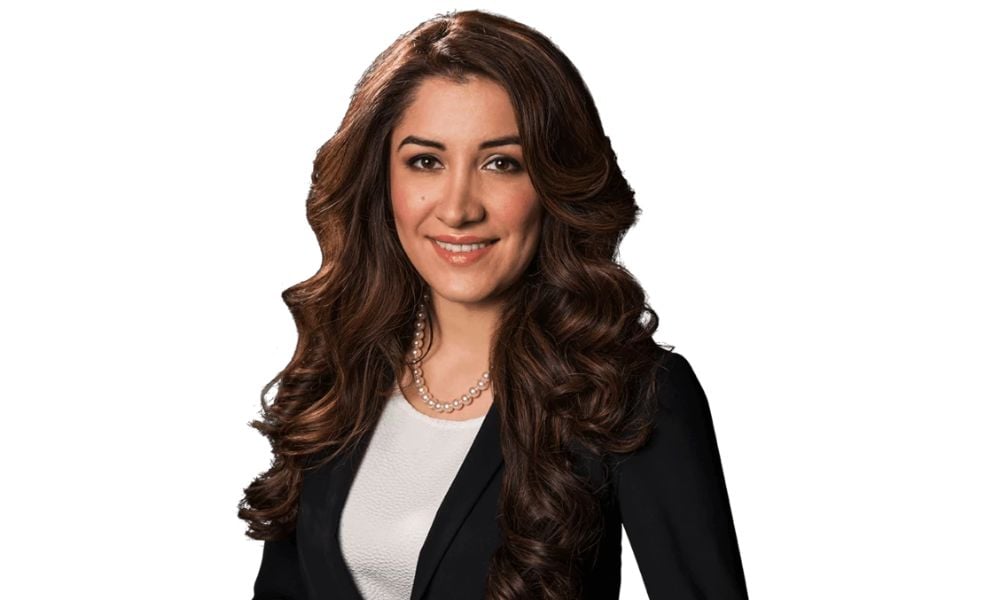Requiring this information 'broadens defence’s avenues on appeal' says Bogoroch's Mahsa Dabirian

This article was created in partnership with Bogoroch & Associates
For some time now, it has been standard practice for judges to instruct Ontario juries to provide particulars or an explanation of their findings on standard of care and causation in medical malpractice and other professional negligence cases.
But the issue remains mired in controversy.
“Asking for particulars puts plaintiffs at a disadvantage because it signals that the reasoning of all the jurors has to be the same, but that’s not the case as long as each juror’s reasoning leads to a finding of negligence on a balance of probabilities,” says Mahsa Dabirian, a partner at Toronto-based Bogoroch & Associates LLP, a civil litigation boutique whose focus includes medical malpractice and personal injury cases. Moreover, “requiring juries to particularize the reasoning for their decision broadens the defence’s avenues on appeal.”
The controversy originates in the varying interpretations of the Supreme Court of Canada’s 1995 decision in ter Neuzen v. Korn. The high court held that juries should be asked to specify the particulars of negligence where it was unclear whether the jury applied the judge’s instruction that it must accept a standard medical practice enunciated by experts as the appropriate legal standard; in instances where the exception to that rule applied and the jury could fix the standard of care without expert evidence, the answer would ensure that the standard adopted by the jury was not unreasonable or unknown in law.
Ontario and British Columbia courts, however, have differed in their interpretation of ter Neuzen.
Indeed, in 2017, the Ontario Court of Appeal in Sacks v. Ross stated unequivocally that asking juries to provide reasons had “become standard practice” in professional negligence matters.
As it turns out, B.C. judges didn’t see it that way.
As early as 2012 in Lush v. Connell, the province’s Court of Appeal held that ter Neuzen did not change the general practice that civil juries were not required to provide particulars of negligence; rather, ter Neuzen adopted the practice only where it was necessary “in order to reveal whether the jury has understood the judge’s instruction that it must accept the standard practice as the legal standard against which the defendant’s conduct must be measured.” Put another way, ter Neuzen applied only where the trial judge considered “that the jury’s understanding of its instructions may need to be tested.”
In the most recent case on the subject, Harder v. Butler (unreported), Saskatchewan Court of King’s Bench Justice Keith Kilback adopted the B.C. view: where the issue of whether a standard medical practice could be negligent did not arise, asking the jury to provide particulars was a matter of discretion – as it was in the case before him.
Here, Justice Kilback concluded, the disadvantages of asking the jury for particulars of negligence and causation outweighed the advantages of doing so. He rejected the defence argument that particulars provided for “more meaningful” appellate review. Because members of a civil jury did not have to agree on the same ground of negligence, he reasoned, it was possible that more than one ground might be identified.
“In these circumstances, it is difficult to see how having a jury specify particulars of the negligence found would facilitate meaningful appellate review without the certainty of knowing that the particulars specified represent the lawful answer of the jury to the question asked,” Justice Kilback stated. “Without this certainty, the jury’s verdict could be liable to be set aside based on particulars of negligence relied upon by a single juror.”
To avoid the problem, the judge would have to instruct that five of six jurors must agree on all the particulars of negligence, but such an instruction would be contrary to the rule that jurors do not have to agree on an identical ground of negligence.
The same reasoning applied to particulars regarding causation. Indeed, Justice Kilback observed, the Ontario Court of Appeal had itself recognized in its 2022 decision in Cheung v. Samra that where jurors could find causation by way of “multiple reasoning paths”, asking for particulars could “undermine the integrity of the jury’s verdict more by infelicities of expression than any real concern for the merits of the jury’s decision or reasoning and may stretch the limits of what a jury can reasonably be expected to give by way of reasons.”
Harder, Dabirian notes, is a plaintiff-friendly decision.
“It is a good decision for the plaintiffs’ bar and a reasonable basis for challenging the principle that jurors in Ontario always need to provide an explanation for their findings of negligence and causation in medical malpractice cases.”










